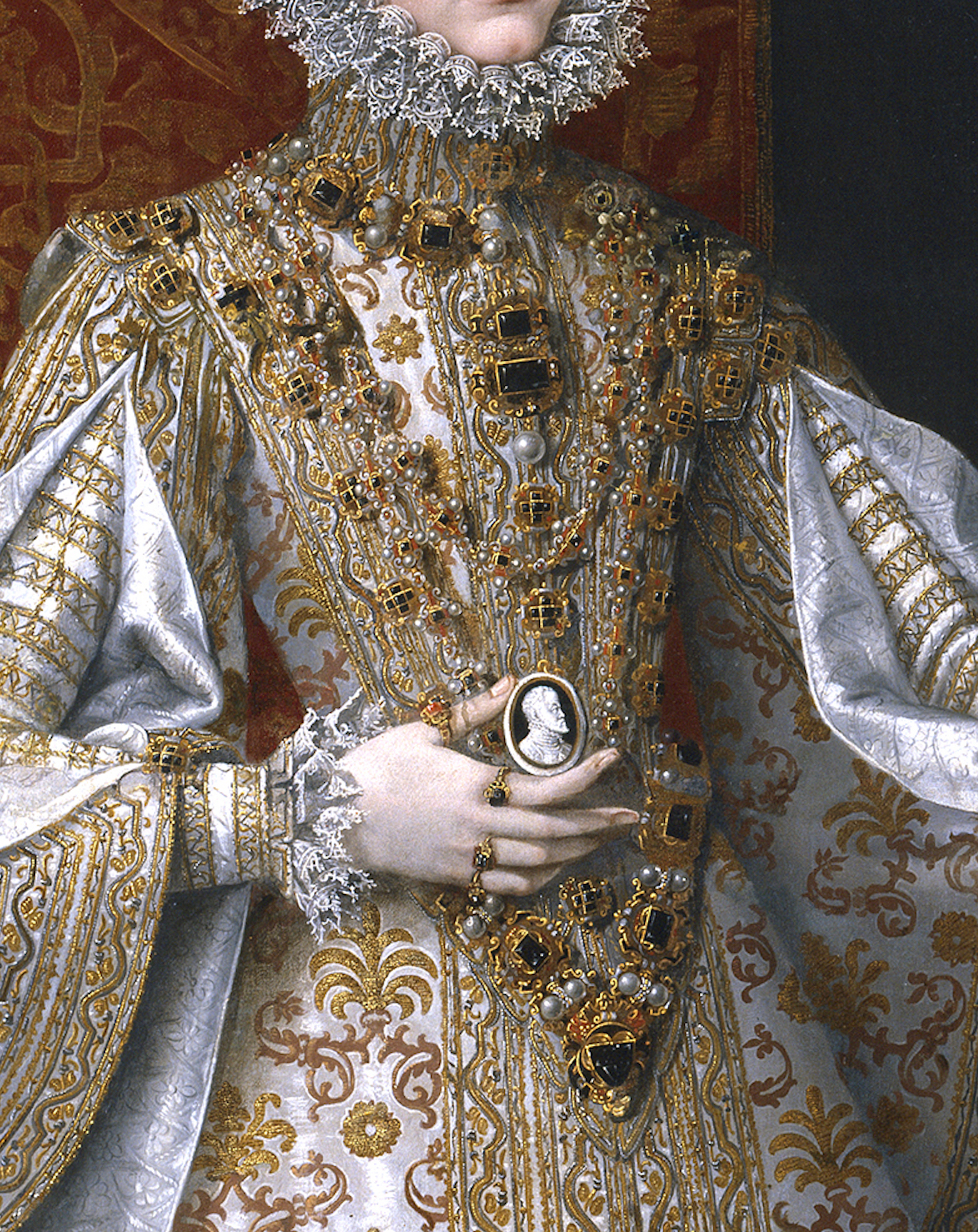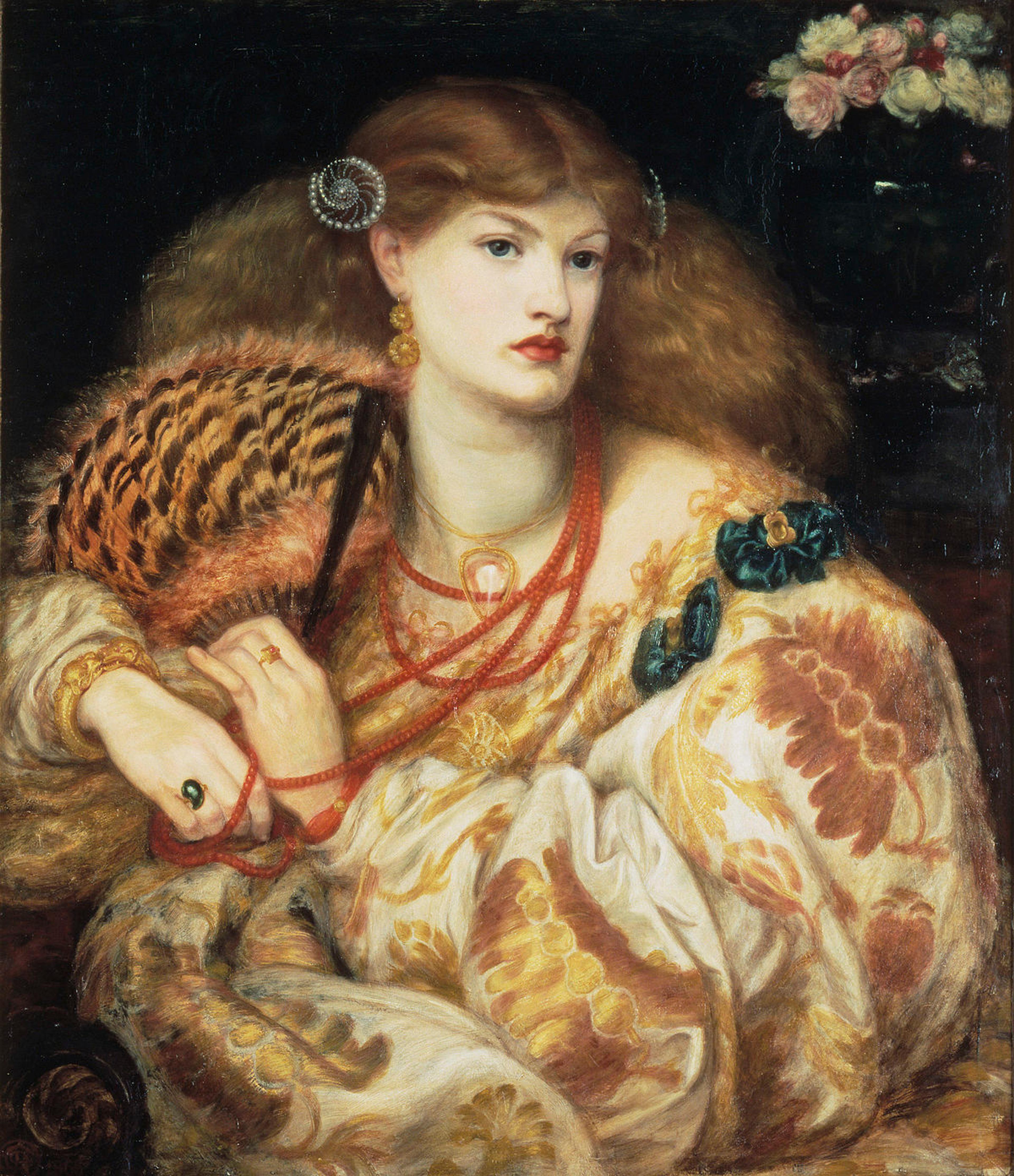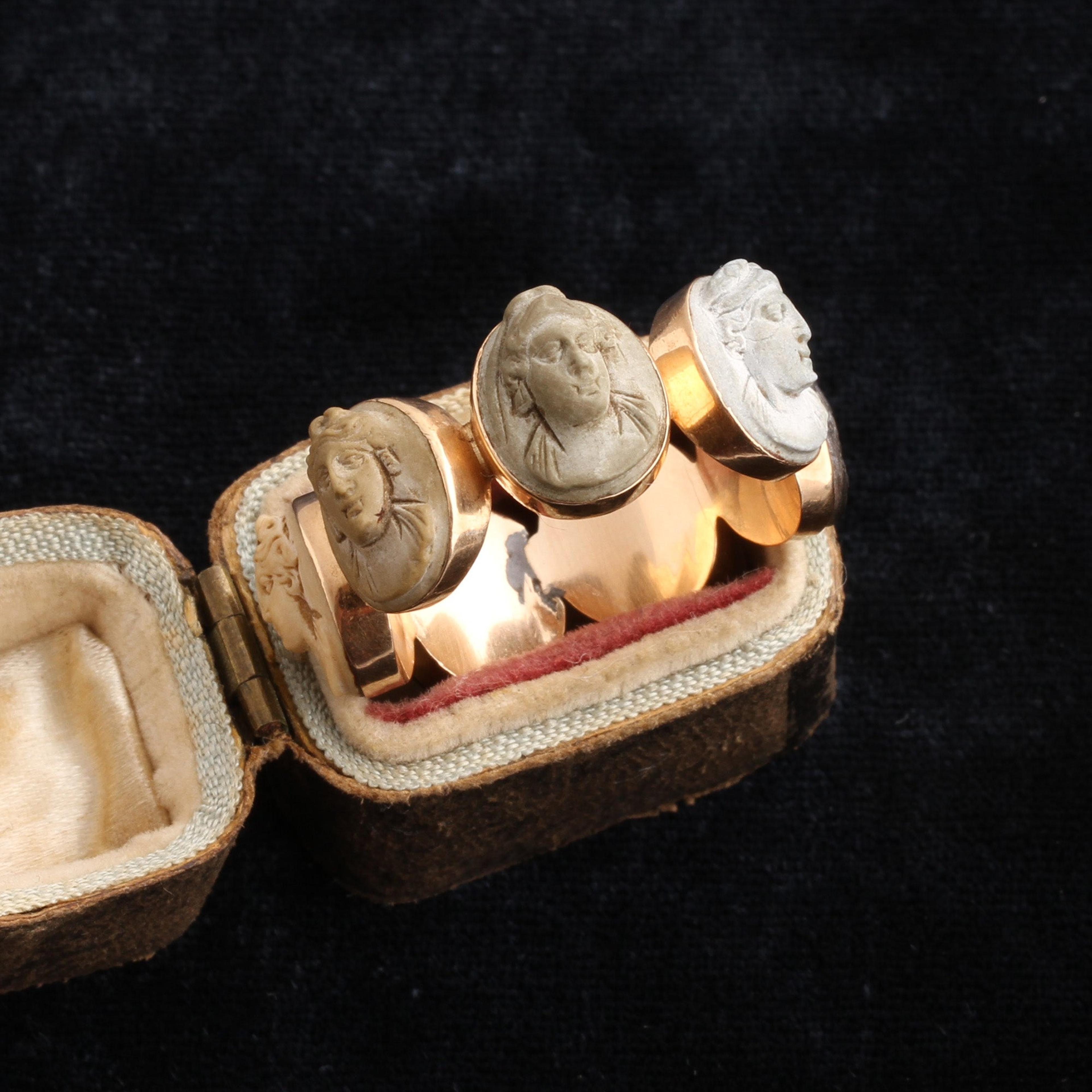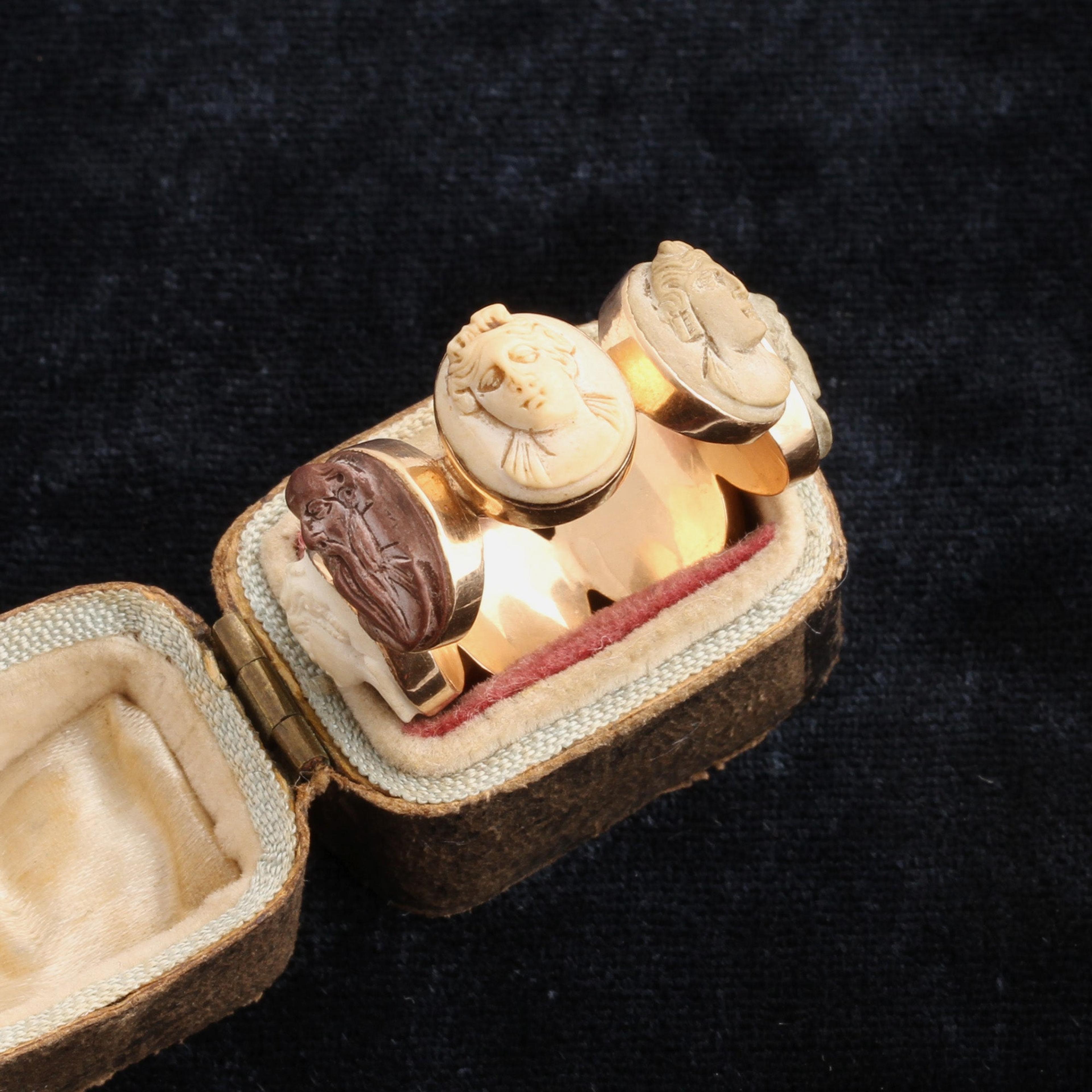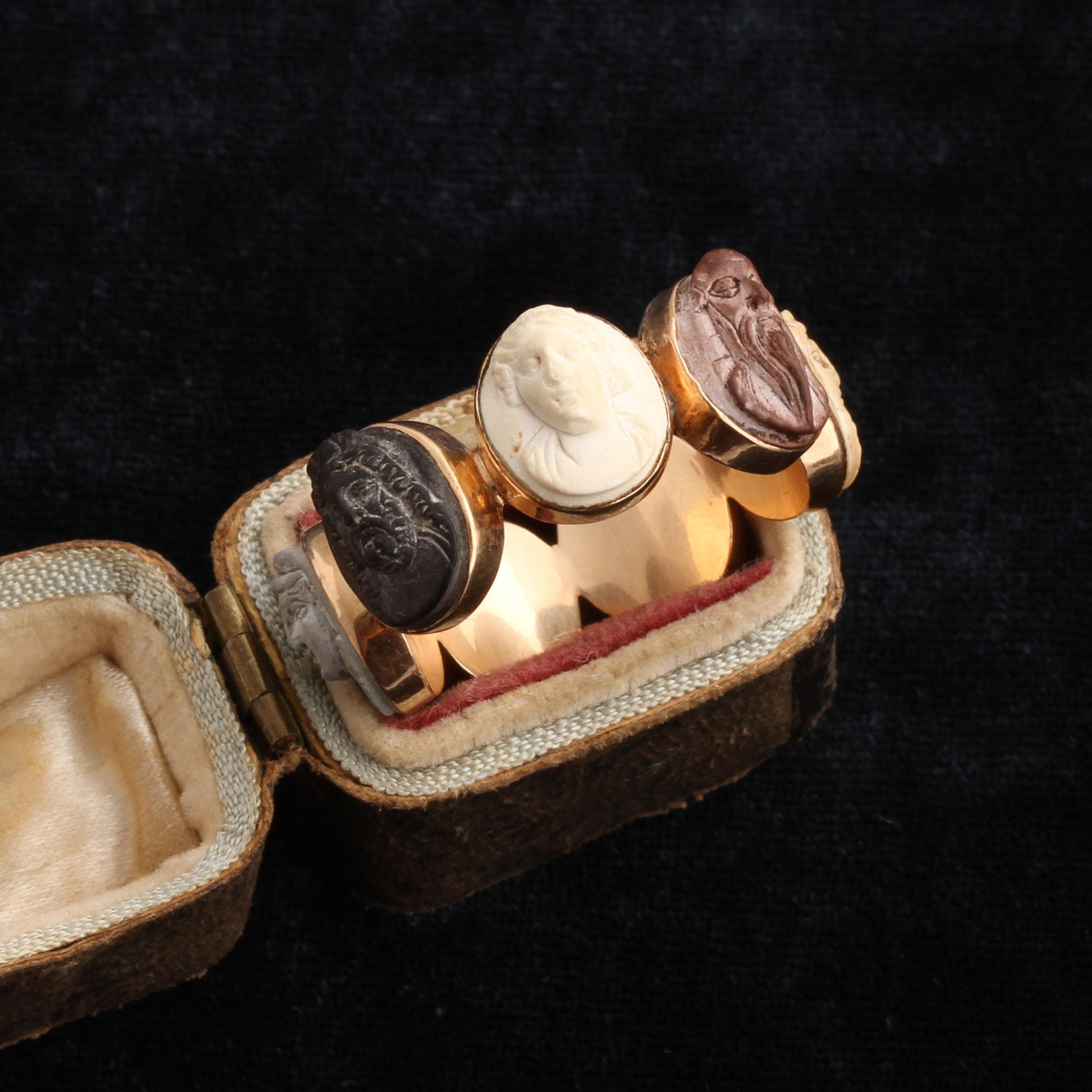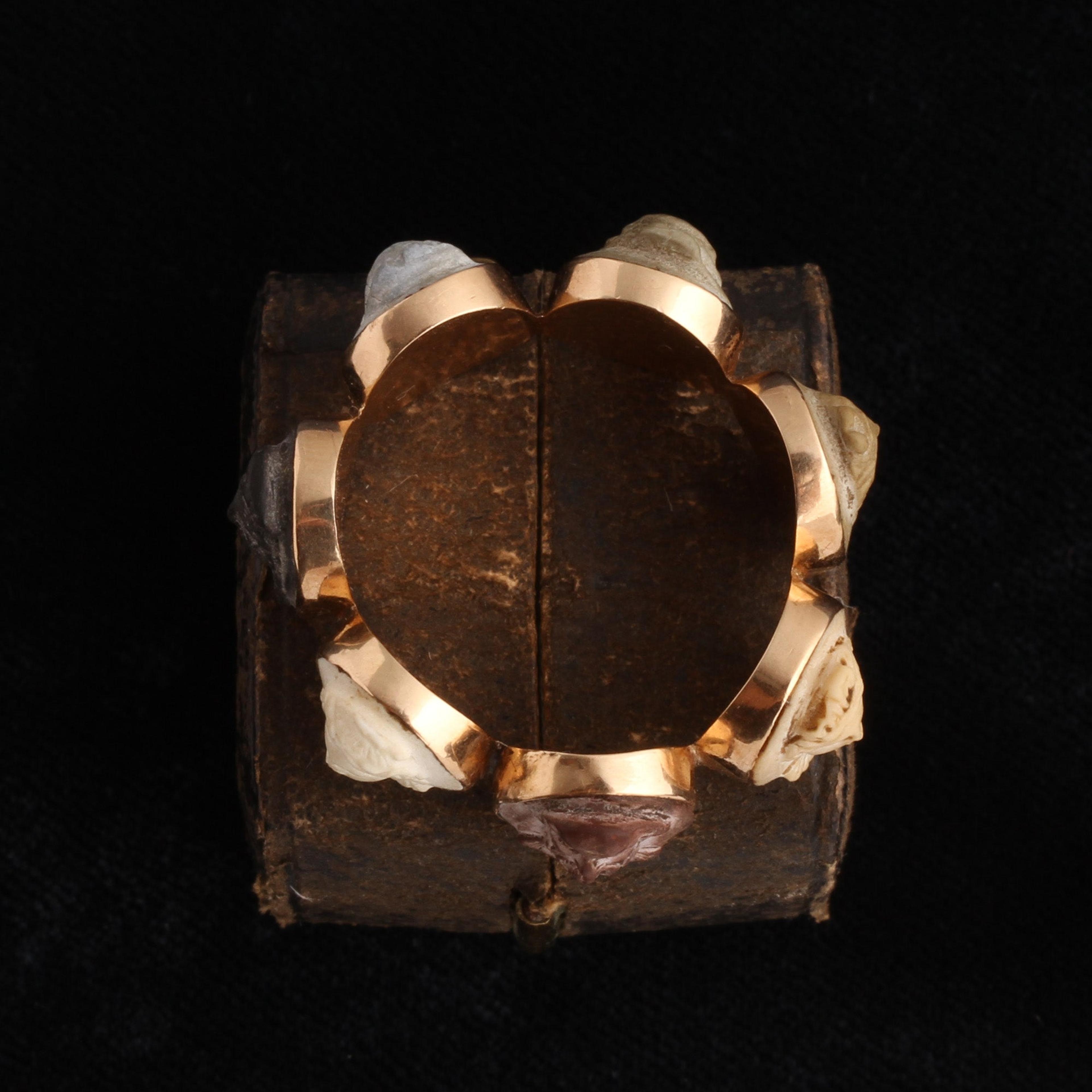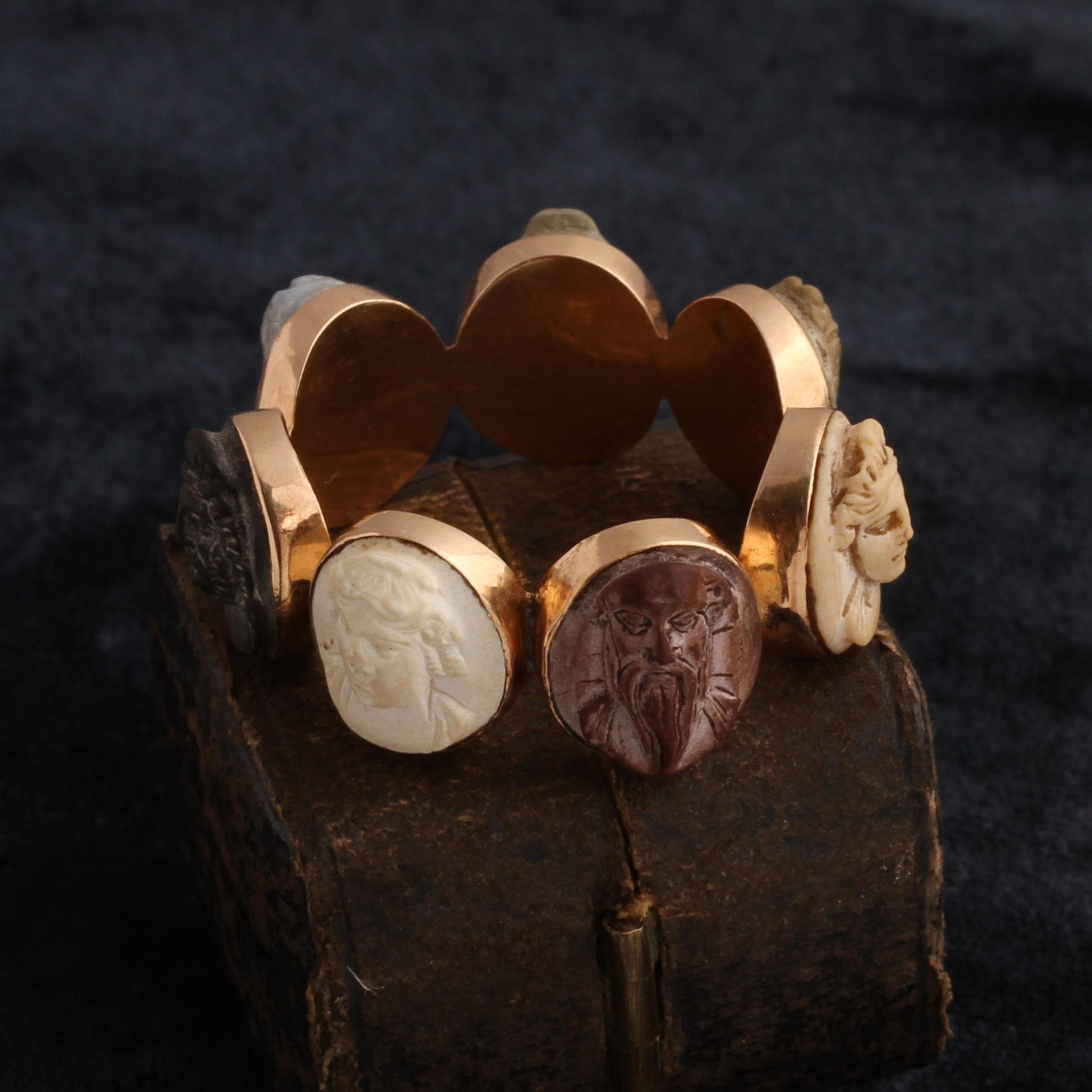The Grand Tour was an essential undertaking for any English man of means beginning in the 1700's, but it wasn't until the early 1800's with the invention of steam-powered transportation that it became a pursuit open to anyone, including women. The tour typically began in Dover, England and though there was no specified order of countries to visit, most travelers went to France, Germany and Switzerland before the culmination of the trip in Italy. Throughout the tour one was supposed to acquire knowledge of language, politics, sport and art and become a generally more well-rounded aristocrat.
During the same period the cameo (made from a variety of materials including shell, coral, onyx and lava) was experiencing great popularity and many of the most expert makers came from Italy. Lava from Mt. Vesuvius provided Italian cameo carvers a plentiful medium to create these miniature reliefs - this particular ring is a souvenir of somebody's Grand Tour. Modeled in gold with, the ring features the seven lava cameos in varying colors.
thedetails
- Materials
14k gold (tests), 7 lava cameos of varying color
- Age
c. 1860
- Condition
Very good - cameos are all in excellent condition; one spot of visible repair work on the inside of the shank
- Size
11.5, cannot be resized; 11.4mm width
Need more photos?
Send us an email to request photos of this piece on a model.
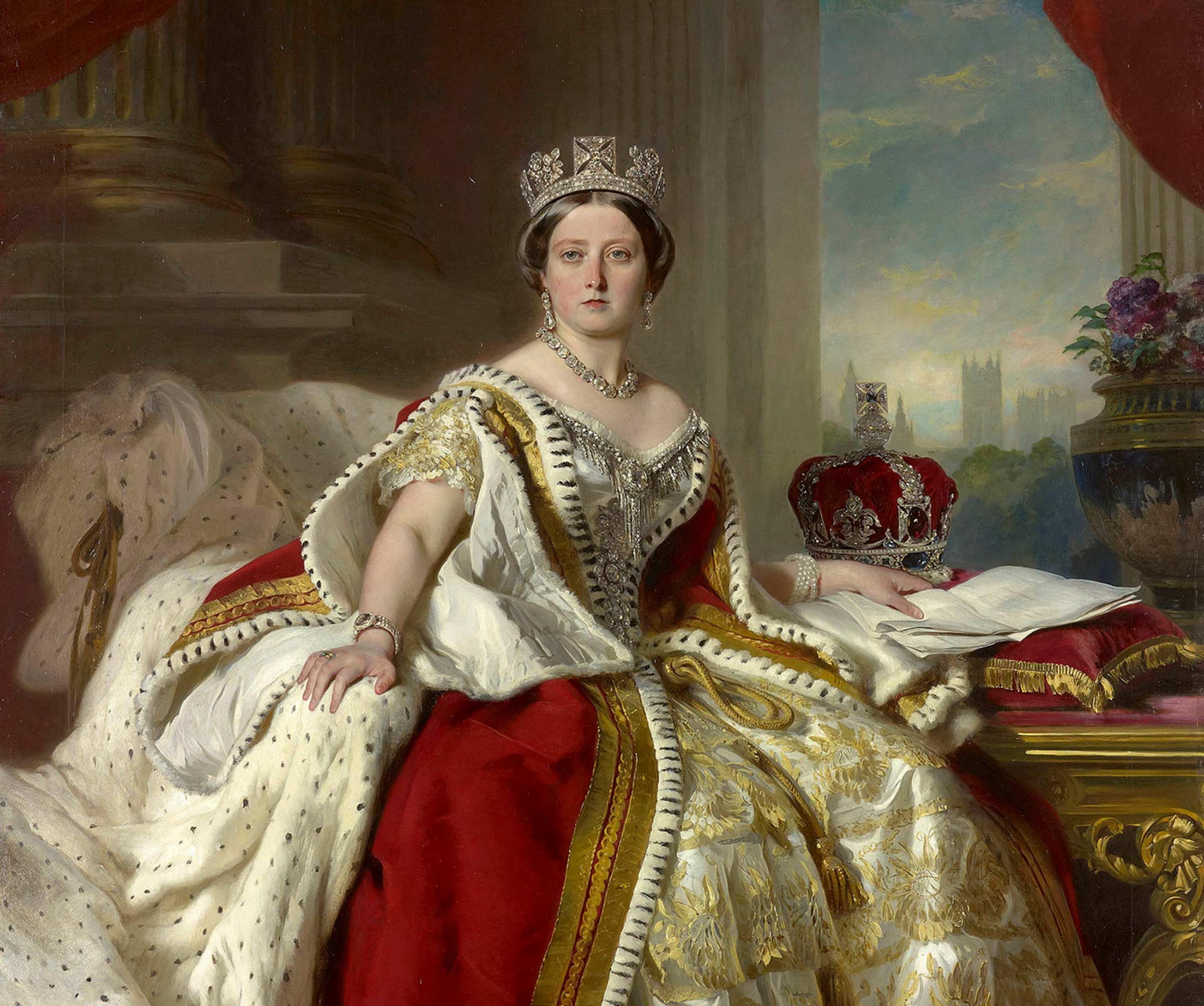
Aboutthe
VictorianEra
1837 — 1901
The Victorians were avid consumers and novelty-seekers, especially when it came to fashion, and numerous fads came and went throughout the 19th century. In jewelry, whatever fashion choices Queen V. made reverberated throughout the kingdom. The Romantic period reflected the queen’s legendary love for her husband, Albert.
Jewelry from this period featured joyful designs like flowers, hearts, and birds, all which often had symbolic meaning. The queen’s betrothal ring was made in the shape of a snake, which stood for love, fidelity, and eternity. The exuberant tone shifted after Prince Albert passed away in 1861, marking the beginning of the Grand Period. Black jewelry became de rigeur as the Queen and her subjects entered “mourning,” which at the time represented not just an emotional state, as we conceive of it today, but a specific manner of conduct and dress. She wore the color black for the remainder of her life, and we see lots of black onyx, enamel, jet, and gutta percha in the jewelry from this time. Finally, during the late Victorian period, which transitioned along with a rapidly changing world into the “Aesthetic Movement”, there was a return to organic and whimsical motifs: serpents, crescent moons, animals, and Japonaisserie designed for the more liberated “Gibson Girl”. During the second half of the 19th century, America entered the global jewelry market, with Tiffany and Co. leading the way. Lapidaries continued to perfect their techniques, and the old European cut emerged toward the end of the Victorian period. The discovery of rich diamond mines in South Africa made the colorless stones more accessible than ever before.
please note:Terms of Sale
Antiques can be returned unworn and in original condition within 10 days of delivery for an exchange or refund minus the cost of shipping. Once a piece has been altered, including ring re-sizing, it is FINAL SALE.
